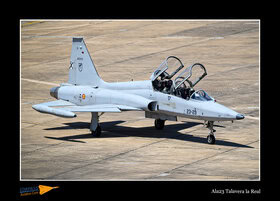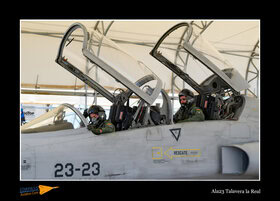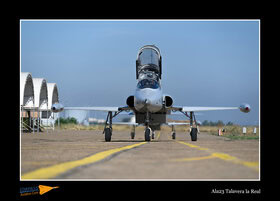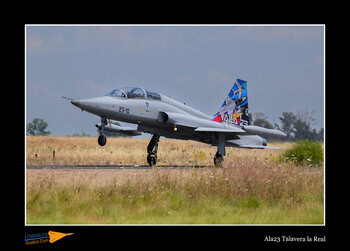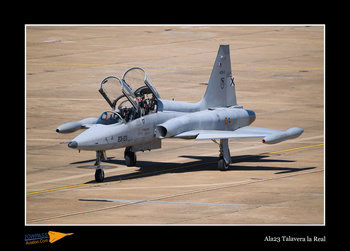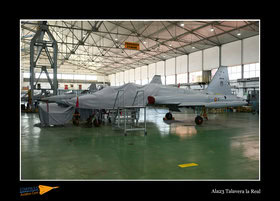History of Talavera la Real Air Base (Badajoz):
It was in the 1930s when the city Badajoz had its first aerodrome which was located on the “Las Bardocas” estate between the Gévora and Guadiana rivers, which periodically subjected it to flooding. During the Spanish war and the following years this airfield served as an elementary school for pilots but shortly after the end of the war the search began for a new location for the airfield. The new location which was chosen as the most suitable is the current Talavera la Real airbase in the region Extremadura near the city of Badajoz. In the early 1950s work began on the so called Reactor School which entered into service in 1953. The works continued for several years, during which the facilities and buildings necessary for the performance of the teaching tasks entrusted to the unit were completed,and which have remained unchanged throughout its history.
History, current and future of Ala23:
Squadron and second Base Commander Lieutenant Colonel Alfredo Lago Llinás
Fighter Pilot Training Course:
Maintenance:
Regular and daily maintenance checks are performed at Talavera la Real itself, like the tires, engines and small failures. After 25 flight hours the F-5 needs small maintenance and after 150 hours the F-5 gets a revision in the hanger which takes a week time. After 500 flight hours the F-5 needs large maintenance which is being done by Maestranza Central de Aviación at Albacete Air Base. After 1.000 flight hours a major overhaul is performed and involves a complete review of the aircraft and its integrated systems. During this overhaul the entire aircraft is stripped down and the airframe’s integrity is investigated, checked for metal cracks and all systems are tested. After the re-assembly of the aircraft it must pass the acceptance test which is performed by an experienced instructor pilot from Ala23.
The authors of Lowpass Aviation.com would like to thank all the involved personnel of Spanish Air Force for their hospitality, time and help during our visit at Ala 23, Talavera la Real.


